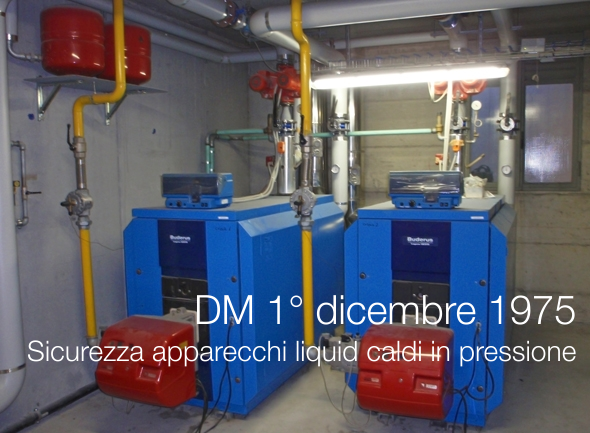Decreto 7 agosto 2025 / Tariffe servizi Regolamento (UE) 2017/746 DMD vitro
ID 24574 | 11.09.2025
Decreto 7 agosto 2025
Determinazione delle tariffe per i servizi resi nell'ambito del regolamento (UE) 20...
Commissione Europea 21 Novembre 2017
Methodology Report Part 1: Methods
Methodology Report Part 2: Environmental policies & data
The present report has been prepared by COWI Belgium in association with Van Holsteijn en Kemna (VHK), as member of the COWI Consortium, under the Multiple Framework Contract for Technical Assistance Activities in the field of energy and transport policy (TREN/R1/350‐2008 lot 3), and in response to the Terms of Reference included in the Contract No. SI2.581529 "Technical assistance for an update of the Methodology for the Ecodesign of Energy‐using Products (MEEuP)".
Sustainable industrial policy aims in particular at developing a policy to foster environmental and energy efficient products in the internal market. The Ecodesign Directive 2009/125/EC is the cornerstone of this approach. It establishes a framework for the setting of ecodesign requirements for energy‐related products with the aim of ensuring the free movement of those products within the internal market. Directive 2009/125/EC repealed the original Directive 2005/32/EC for the
setting of ecodesign requirements for energy‐using products.
The Methodology for the Ecodesign of Energy‐using Products (MEEuP)1 was developed in 2005 to contribute to the creation of a methodology allowing evaluating whether and to which extent various energy‐using products fulfil certain criteria that make them eligible for implementing measures under the Ecodesign Directive 2005/32/EC.
Against this background the objective of the underlying study is twofold:
1.) To review the effectiveness and update, whenever necessary, the Ecodesign Methodology after having been applied for 5 years in ecodesign studies and contributed to the evaluation of
implementing measures on energy‐using products.
2.) To extend the Ecodesign Methodology to Energy‐related Products to evaluate whether and to which extent new energy‐related products fulfil certain criteria for implementing measures under the Ecodesign Directive 2009/125/EC.
...
Methodology Report Part 1: Methods
CONTENTS
ACRONYMNS
INTRODUCTION
General
Objective and scope of Ecodesign
Eligibility of products
Preparing draft measures, legal background
MEErP Structure
Reporting and highlights per task
1 TASK 1: SCOPE
2 TASK 2: MARKETS
2.1 Introduction
2.2 Sales and Trade
2.3 Energy rates for private households
2.4 Energy rates for industry
2.5 Water rates
2.6 Interest and inflation rates
2.7 Tax rates
2.8 Acquisition costs
2.9 Summary EU averages
3 TASK 3: USERS
3.1 Extended product and systems approach
3.2 Extended ErP product scope
3.3 Method indirect ErP effect
3.4 Example shower head or water tap
3.5 Example: Building insulation materials
3.6 Example: Windows
3.7 Example: Detergents
4 TASK 4: TECHNOLOGIES
4.1 Technical product description (Task 4.1)
4.1.1 Capacity building
4.1.2 Base Case
4.1.3 Least Life Cycle Costs (LLCC)
4.1.4 Break‐even point (BE)
4.1.5 Best Available Technology (BAT)
4.1.6 Best Not (yet) Available Technology (BNAT)
4.2 Other subtasks
5 TASK 5/6: ENVIRONMENT
5.1 Introduction
5.2 LCI accounting rules
5.2.1 Introduction 92
MEErP 2011 METHODOLOGY PART 1 FINAL
5.2.2 Accounting Unit and Auxiliary Parameters
5.2.3 System boundaries
5.2.4 Multi‐product processes and multi‐process products
5.2.5 Recycling
5.2.6 Role of product life and number of users
5.3 LCIA, impact indicators
5.4 ErP EcoReport Manual
6 TASK 5/6: ECONOMICS
6.1 Life Cycle Costs
6.1.1 Consumer Life Cycle Costs
6.1.2 Least Life Cycle Costs (ranking design options)
7 TASK 7: SCENARIOS
Methodology Report Part 2: Environmental policies & data
CONTENTS
PREFACE
ACRONYMNS
1 INTRODUCTION
2 RESOURCES
2.1 Materials
2.1.1 Steel
2.1.2 Plastics
2.1.3 Aluminium
2.2 Recycling
2.3 Energy
2.3.1 Energy policy
2.3.2 Energy statistics
2.3.3 Energy trends
2.3.4 Consumption by application
2.3.5 Efficiency of power generation and distribution
2.3.6 Security of energy supply
2.3.7 Accounting units
2.4 Water
2.5 Waste
3 EMISSIONS
3.1 Greenhouse gases (GHGs)
3.2 Air pollution in general
3.3 Acidification
3.4 Non‐Methane Volatile Organic Compounds (NMVOCs)
3.5 Persistent Organic Pollutants (POPs), including PAHs
3.6 Heavy Metals to air (HM air)
3.7 PAHs
3.8 Particulate Matter
3.9 Heavy Metals to Water (HMwater)
3.10 Eutrophication
4 OTHER IMPACTS
4.1.1 Noise
4.1.2 Other health‐related impacts
5 ECOREPORT 2011 LCA UNIT INDICATORS
5.1 Introduction
5.2 Table Unit Indicator
5.3 Notes per Policy Area
5.4 Notes per Unit Indicator
5.4.1 Plastics
5.4.2 Metals 121
MEErP 2011 METHODOLOGY PART 2 FINAL
5.4.3 Coating/plating
5.4.4 Electronics
5.4.5 Miscellaneous
5.4.6 Final Assembly
5.4.7 Distribution & Retail
5.4.8 Energy use during product life
5.4.9 Consumables during product life
5.4.10 Maintenance, Repairs
5.4.11 Disposal: Environmental costs
5.4.12 Disposal: Environmental Benefit
6 CLIMATE, ENERGY & BUILDINGS
6.1 Introduction
6.2 Climate
6.3 Domestic water consumption (cold and hot)
6.4 Lighting
6.5 Residential buildings
6.5.1 Single family/duplex dwellings
6.5.2 Multi‐family dwellings
6.5.3 Miscellaneous residential building‐related characteristics (tables)
6.6 Commercial buildings
6.6.1 Distributive trade and personal services
6.6.2 Hotels & Restaurants
6.6.3 Business services, real estate and rental companies
6.6.4 Transportation and communication
6.6.5 Communication
6.6.6 Financial institutions
6.7 Public sector and community sector buildings
6.7.1 Health care
6.7.2 Education
6.7.3 Justice
6.7.4 Defence
6.7.5 Home office and municipalities
6.7.6 Other public buildings
6.7.7 Political and religious organizations
6.7.8 Entertainment and news
6.7.9 Other cultural/ educational activities
6.7.10 Sports facilities
6.8 Primary & secondary sector buildings
6.8.1 Primary sector
6.8.2 Secondary sector
7 PEOPLE
7.1 Introduction
7.2 Occupancy rate residential buildings
7.3 Occupancy rates tertiary sector buildings
7.1 Stock model
7.1.1 Basic set‐up
7.1.2 Preparation
7.1.3 Inputs
7.1.4 Calculations stock model
7.1.5 Outputs
7.2 Design Option Incremental Costs
7.3 Product Life
7.4 Revenues
7.5 Consumer expenditure
7.6 Employment
7.7 Sensitivity analysis: Societal life cycle costs
Fonte: Commissione Europea 2017
Correlati:
ID 24574 | 11.09.2025
Decreto 7 agosto 2025
Determinazione delle tariffe per i servizi resi nell'ambito del regolamento (UE) 20...
Update 01.08.2019
Pubblicato nella GU L del 25.06.2019 il Regolamento (UE) 2019/1009 del Parlamento Europeo e del...

Norme di sicurezza per apparecchi contenenti liquidi caldi sotto pressione
(GU n. 33 del 6 febbraio 1976 - SO)
________
Art. 1. I generatori ed i recipienti di liquid...
Testata editoriale iscritta al n. 22/2024 del registro periodici della cancelleria del Tribunale di Perugia in data 19.11.2024